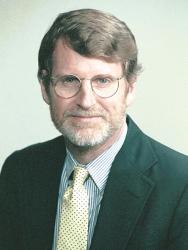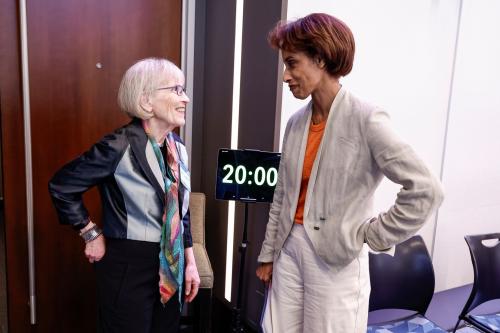As the population grows older an increasing share of the workforce will be past age 60. Older workers are considered less productive than younger ones, raising the issue of whether an aging workforce will also be a less productive one. This paper uses evidence from the monthly Current Population Survey (CPS) files to shed light on the issue. There are two main reasons for the surge in older workers. First, the sheer size of the baby boom generation means that the number of Americans attaining age 60 each year is climbing steeply. Second, labor force participation rates among adults between 60 and 74 have increased.
The share of all labor income earned by older workers has also soared in recent years because they have enjoyed faster wage gains than workers who are younger. It is important to understand why this is the case. A major reason is that older workers are now better educated compared with prime-age workers than was the case in the past. In the past the gap in education between prime-age workers and older Americans was large. It is now much smaller.
Educational attainment is also important for understanding the increase in Americans’ labor force participation rates at older ages. At older ages there are major differences between the participation rates of highly educated and less educated groups, and these differences have persisted for several decades. In the early 1990s nearly 60 percent of 62-74 year-old men with doctoral and professional degrees were still in labor force. In contrast, only 20 percent of male high school dropouts the same age remained in the workforce. The participation-rate gap was smaller for older women, but it was still sizeable.
In the past quarter century there was a steady improvement in older Americans’ educational credentials, both absolutely and in comparison to the qualifications of younger cohorts still in their prime working years. The absolute and relative improvement of the qualifications of the aged will be much slower between now and 2030. The percentage of older men in the lowest and the highest educational classes will remain largely unchanged, though we will see continued gradual improvement in the educational attainment of older women.
The improvement in older Americans’ educational attainment has improved their job market position. This is especially true for the men and women who actually remain in the workforce, because older Americans who stay attached to the labor force after 62 are much more likely to have received schooling after high school. Changes in the distribution of educational attainment have influenced the age profile of earnings. Older workers now receive much better compensation compared with their prime-age counterparts. Workers younger than 50 have seen a modest decline in their relative annual earnings, but workers past 55 have enjoyed impressive relative earnings gains. Compared with the earnings of an average 35-54 year-old worker, the average worker between 65 and 69 has seen his or her earnings climb 30 percentage points. Workers between 70 and 74 experienced a 28-percentage-point gain in their relative earnings. As noted, the relative earnings gains of older workers can be traced to the improvement in their educational attainment compared with younger workers. However, this development does not fully explain their gains. If we separately tabulate the age-earnings profiles of workers within each educational group we see similar, though generally far smaller, income gains among workers in the oldest age categories.
Using data from the March CPS files, I tabulated the distribution of annual earned income received by 25-74 year-old workers. I find that the share of male earnings received by 60-74 year-olds increased from 7.3 percent in 2000 to 12.7 percent in 2010. Among women earners, the share increased from 5.8 percent of total female earnings in 2000 to 11.7 percent of earnings in 2010. The magnitude of these gains is partly explained by the rising share of older workers in the labor force, partly by their increasing levels of work, and partly by improvements in their relative earnings if they do work. Even if employment and earnings patterns of older workers do not change during the next two decades, the share of all labor income received by older workers will continue to rise through about 2025. At their peak in importance, 60-74 year-old men will account for about 16 percent of male earnings and 60-74 year-old women for about 14½ percent of female earnings.
What has been the impact of older workers on workforce productivity? If worker productivity has been harmed by the surge of older workers into the labor force the fact is not evident in the earnings statistics for the elderly themselves. Using one standard benchmark for measuring individual worker productivity— hourly wages—workers between 60 and 74 are currently paid more than an average worker who is between 25 and 59.
The hourly pay premium for older men was about 20 percent in 2010. For women it was about 10 percent. Other benchmarks show a somewhat less favorable picture, but all of them show considerable improvement in the relative position of aged workers compared with the nonaged. None of the indicators of male productivity suggest that older male workers are less productive than average workers who are between 25 and 59. The expectation that older workers will reduce average productivity may be fueled by the perception that the aged are less healthy, less educated, less up to-date in their knowledge, and more fragile than the young. While all these images of the elderly are accurate to some degree, they do not necessarily describe the people who choose or who are permitted to remain in paid employment at older ages. This paper shows that there are enormous differences between the labor force participation rates of older Americans depending on their level of schooling. People with limited education have low employment rates in old age. People with college and advanced degrees tend to remain in the workforce longer. If less productive workers selectively exit the workforce at younger ages, the average productivity of the older workers who remain may compare favorably to the average productivity of the young. A surge in the percentage of the potential workforce that is old may simply increase the proportion of the workforce that consists of comparatively skilled older workers.





